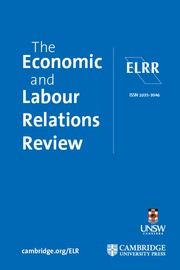No CrossRef data available.
Article contents
The best time to be young? A retrospective study of graduates’ transition to employment in Romania
Published online by Cambridge University Press: 15 April 2025
Abstract
This article explores the subjective experiences of transition to employment in the outsourced/offshored business service sector in Romania. Based on 138 interviews with junior and senior graduates, it maps how different ‘tidal economic waves’ associated with Romania’s economic transition have intersected working biographies since the 1990s. The paper argues that the sector generates many middle-class employment opportunities, legitimising consensus around the idea that ‘this is the best time to be young.’ Yet, informed by elements of political economy, it challenges the conventional repertoires of optimism. In doing so, it tentatively questions the long-term occupational prospects of those who take up entry-level positions in (arguably) automatable, on-the-move, and standardised jobs with lesser high-end value. The paper communicates using the structure of opportunity theory by highlighting how, alongside location, the concept of time (personal, historical, and company time) is woven into the work biographies of members of an under-researched group.
- Type
- Original Article
- Information
- Copyright
- © The Author(s), 2025. Published by Cambridge University Press on behalf of The University of New South Wales


